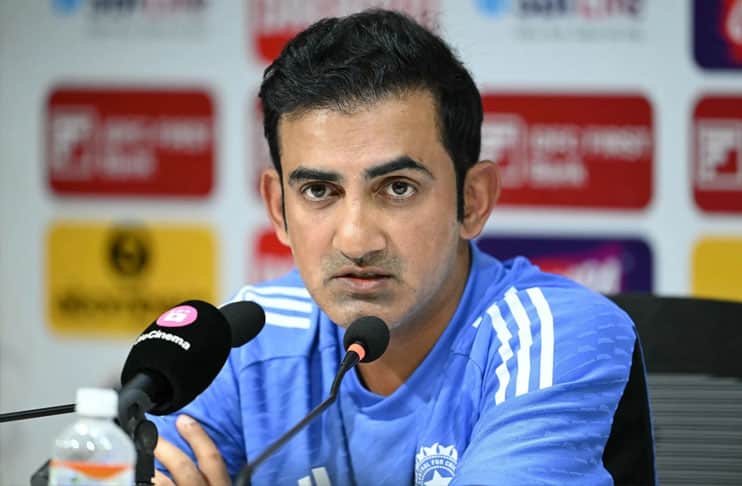Mumbai: When Gautam Gambhir was appointed as the head coach of the Indian men’s cricket team on July 9, 2024, he inherited a team at a crossroads. Succeeding Rahul Dravid, Gambhir’s arrival came on the back of a euphoric T20 World Cup triumph and an IPL title with Kolkata Knight Riders (KKR)—a double success that propelled optimism about his leadership. A two-time World Cup hero known for his steely resolve, Gambhir was viewed as the ideal torchbearer for India’s next chapter in cricket. Yet, just over a year into his tenure, murmurs of discontent are beginning to emerge. Has Indian cricket lost its spark under Gambhir?
The Context of Gambhir’s Appointment
Taking over the Indian team is never just a job—it’s a high-wire act. With a billion expectations riding on every result, Gautam Gambhir’s appointment was both a reward for his cricketing intellect and a challenge that would test every bit of it.
India was entering a transitional period. Legends like Virat Kohli, Rohit Sharma, and Ravichandran Ashwin were nearing retirement or stepping away from Test cricket. Gambhir was tasked with three critical objectives: sustain India’s dominance in white-ball formats, rebuild a solid Test unit, and prepare a young core for upcoming ICC events like the 2025 Champions Trophy and the 2026 T20 World Cup.
Given Gambhir’s legacy as a gritty opener—best known for match-winning knocks in the 2007 T20 World Cup and 2011 ODI World Cup finals—many expected him to bring that same intensity and commitment to his role as coach. His disdain for celebrity culture in the dressing room and emphasis on team-first values seemed like the medicine Indian cricket needed.
Performance Across Formats
T20 Internationals: A Bright Start
Gambhir’s tenure kicked off with a clean 3-0 T20I series sweep over Sri Lanka in July 2024. It was a strong statement—India wasn’t going to rest on its World Cup laurels. With a young, fearless squad at his disposal, Gambhir emphasized aggressive batting, adaptable bowling, and quick decision-making.
Suryakumar Yadav, Rishabh Pant, and young pacers like Mukesh Kumar thrived under this new setup. The pinnacle came in March 2025 when India clinched the ICC Champions Trophy—its third in history. This reinforced Gambhir’s credentials in limited-overs cricket.
Between July 2024 and January 2025, India played 26 internationals, winning 14—most of those victories in the T20 format. The numbers suggest that Gambhir’s white-ball philosophy, steeped in IPL-style tactical sharpness, has largely succeeded in keeping India competitive and thrilling in T20Is.
ODIs: A Rollercoaster Ride
The ODI journey under Gambhir has been far more turbulent. In a shocking result, India lost a bilateral series to Sri Lanka in 2024—their first in 27 years. Even more concerning, India ended that calendar year without a single ODI series win, a statistical anomaly not seen in 45 years.
The Champions Trophy victory softened criticism, but cracks in India’s 50-over consistency remained. Gambhir’s bold selections—banking on wildcard picks—sometimes clicked, but often left the team looking unbalanced. The ODI squad lacked the cohesion and finishing strength that had become India’s hallmark in previous years.
While Gambhir’s risk-taking was commendable, it raised questions about long-term planning and team stability. Could the occasional flash of brilliance mask deeper structural issues?
Test Cricket: A Cause for Concern
If there’s a format where the spark appears to be flickering, it’s Test cricket. Under Gambhir, India faced a humiliating 0-3 whitewash at home against New Zealand in late 2024—their first home Test series loss in over a decade.
The nightmare continued with a 1-3 loss in the 2024–25 Border-Gavaskar Trophy in Australia, effectively killing India’s hopes of making it to another World Test Championship final. And things didn’t improve in the July 2025 series against England, with India managing just one win out of five Tests under new captain Shubman Gill.
Analysts like Aakash Chopra pointed to India’s depleted bowling attack and lack of application in pressure situations. Gambhir himself acknowledged that the team was “one session, one bowler short” of turning the tide in Australia. The absence of veterans like Kohli and Ashwin left leadership and skill voids, which the younger players haven’t fully filled yet.
Leadership Style and Team Dynamics
Gambhir’s leadership mantra is built on discipline, minimal distractions, and absolute commitment to team goals. His tenure has brought stricter BCCI rules—for example, limiting family time on overseas tours to 14 days during long assignments. While this has been seen as a step toward professionalizing the setup, it’s also been a source of friction.
Reports emerged of players—including Virat Kohli—expressing unease with these restrictions. On X (formerly Twitter), posts from handles like @SPORTYVISHAL in early 2025 hinted at communication breakdowns within the team.
Though no player has openly criticized Gambhir, whispers about his intense and sometimes abrasive nature not sitting well with the dressing room haven’t died down. This stands in contrast to predecessors like Shastri—whose charismatic aura forged unity—and Dravid, whose calm demeanor fostered respect and space for growth.

To his credit, Gambhir has received praise from younger players. Fast bowler Akash Deep said in an interview that Gambhir’s belief in youth and clarity of expectations helped him grow as a cricketer. It seems the coach’s style might be a double-edged sword—boosting young players while potentially alienating seniors.
Tactical Calls and Squad Development
One of Gambhir’s strengths is his tactical awareness. In T20s, he has been quick to rotate bowlers, use left-field matchups, and encourage aggressive field settings. His strategy reflects the modern IPL-influenced school of coaching.
But Test cricket hasn’t benefitted from this same sharpness. Critics questioned several decisions—like resting Jasprit Bumrah during the England series’ second Test—especially when wickets were hard to come by. Even Kumar Sangakkara called it a “curious omission.”
To address India’s red-ball slump, Gambhir has revived India A tours—a critical tool in rebuilding a robust bench. In fact, his decision to personally monitor an India A tour to the UK during the IPL 2025 season signaled a long-term vision few had expected.
However, with Indian cricket fans and pundits having little patience, will this developmental model have time to flourish?
The Kohli Retirement Controversy
Virat Kohli’s sudden Test retirement in early 2025 sent shockwaves through the cricketing world. When Rohit Sharma and Ashwin followed suit, speculation intensified.
Was there a rift between Gambhir and Kohli? Their fiery on-field clashes during past IPL encounters—especially the infamous face-off in 2023—left scars. Despite both parties denying any current friction, social media and some journalists remain unconvinced.
Alyssa Healy’s cryptic remark, reported in the Hindustan Times, that “Kohli wasn’t ready to retire,” added fuel to the fire. A post by @RacchaRidhvik on December 30, 2024, listing India’s poor red-ball performances and hinting at internal discord, gained traction among fans.
Whether Gambhir influenced Kohli’s decision or not, the abrupt exit of three veterans created a vacuum that India hasn’t been able to fill effectively—yet.
The Spark: Missing or Mutating?
So, is the spark gone?
In T20s, certainly not. The aggressive mindset, electric fielding, and bold strategies remain intact. The Champions Trophy win, too, points to retained firepower in limited-overs cricket.
But in Test cricket, the sparkle has dimmed. India no longer looks invincible at home or threatening abroad. Yet this may not be a permanent decline—rather a recalibration. The old guard is gone, and the next generation is being forged in fire. Gambhir’s focus on discipline, preparation, and grooming new leaders could eventually lead to a new spark, grounded in resilience rather than flair.
A Spark in Transition
Gautam Gambhir’s coaching journey is still young but already filled with drama, milestones, and intense scrutiny. His bold, disciplined, and tactical style has kept India relevant in white-ball formats, even earning silverware. But in Test cricket—the format that defines legacy—India has stumbled.
Rather than saying the spark is lost, it might be more accurate to say it’s evolving. As Gambhir balances rebuilding, results, and man-management, the coming months—especially the 2026 T20 World Cup and future Test series—will determine whether his era becomes one of true transformation or one remembered for missed potential.
What is clear, though, is this: the flame of Indian cricket still burns—but it’s waiting to roar again.





